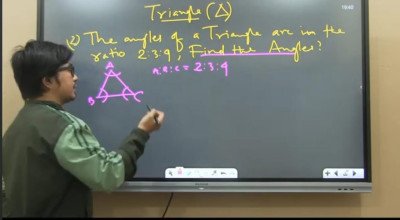Linear equations in two variables are equations which can be expressed as ax + by + c = 0, where a, b and c are real numbers and both a, and b are not zero. The solution of such equations is a pair of values for x and y which makes both sides of the equation equal.
দুটি ভেরিয়েবলে রৈখিক সমীকরণের জোড়ার ভূমিকা
দুটি ভেরিয়েবলের রৈখিক সমীকরণ হল সমীকরণ যা ax + দ্বারা + c = 0 হিসাবে প্রকাশ করা যেতে পারে, যেখানে a, b এবং c বাস্তব সংখ্যা এবং a, এবং b উভয়ই শূন্য নয়। এই ধরনের সমীকরণের সমাধান হল x এবং y এর জন্য এক জোড়া মান যা সমীকরণের উভয় দিককে সমান করে।Introduction
Let’s look at the solutions of some linear equations in two variables. Consider the equation 2x + 3y = 5. There are two variables in this equation, x and y.
- Scenario 1: Let’s substitute x = 1 and y = 1 in the Left Hand Side (LHS) of the equation. Hence, 2(1) + 3(1) = 2 + 3 = 5 = RHS (Right Hand Side). Hence, we can conclude that x = 1 and y = 1 is a solution of the equation 2x + 3y = 5. Therefore, x = 1 and y = 1 is a solution of the equation 2x + 3y = 5.
- Scenario 2: Let’s substitute x = 1 and y = 7 in the LHS of the equation. Hence, 2(1) + 3(7) = 2 + 21 = 23 ≠ RHS. Therefore, x = 1 and y = 7 is not a solution of the equation 2x + 3y = 5.
Geometrically, this means that the point (1, 1) lies on the line representing the equation 2x + 3y = 5. Also, the point (1, 7) does not lie on this line. In simple words, every solution of the equation is a point on the line representing it.
To generalize, each solution (x, y) of a linear equation in two variables, ax + by + c = 0, corresponds to a point on the line representing the equation, and vice versa.
ভূমিকা
চলুন দুটি চলকের কিছু রৈখিক সমীকরণের সমাধান দেখি। 2x + 3y = 5 সমীকরণটি বিবেচনা করুন। এই সমীকরণে দুটি চলক আছে, x এবং y।
দৃশ্যকল্প 1: আসুন সমীকরণের বাম দিকের (LHS) x = 1 এবং y = 1 প্রতিস্থাপন করি। তাই, 2(1) + 3(1) = 2 + 3 = 5 = RHS (ডান হাতের দিক)। সুতরাং, আমরা উপসংহারে আসতে পারি যে x = 1 এবং y = 1 হল 2x + 3y = 5 সমীকরণের একটি সমাধান। অতএব, x = 1 এবং y = 1 হল 2x + 3y = 5 সমীকরণের একটি সমাধান।
দৃশ্যকল্প 2: আসুন সমীকরণের LHS-এ x = 1 এবং y = 7 প্রতিস্থাপন করি। তাই, 2(1) + 3(7) = 2 + 21 = 23 ≠ RHS। অতএব, x = 1 এবং y = 7 সমীকরণ 2x + 3y = 5 এর সমাধান নয়।
জ্যামিতিকভাবে, এর মানে হল যে বিন্দু (1, 1) লাইনের উপর অবস্থিত যা 2x + 3y = 5 সমীকরণের প্রতিনিধিত্ব করে। এছাড়াও, বিন্দু (1, 7) এই লাইনে থাকে না। সহজ কথায়, সমীকরণের প্রতিটি সমাধান এটিকে প্রতিনিধিত্বকারী লাইনের একটি বিন্দু।
সাধারণীকরণের জন্য, দুটি ভেরিয়েবলে একটি রৈখিক সমীকরণের প্রতিটি সমাধান (x, y), ax + by + c = 0, সমীকরণের প্রতিনিধিত্বকারী লাইনের একটি বিন্দুর সাথে মিল রাখে এবং এর বিপরীতে।



















